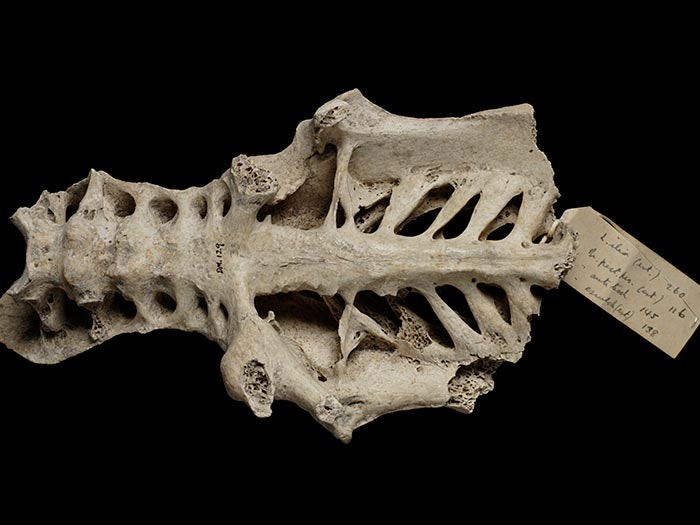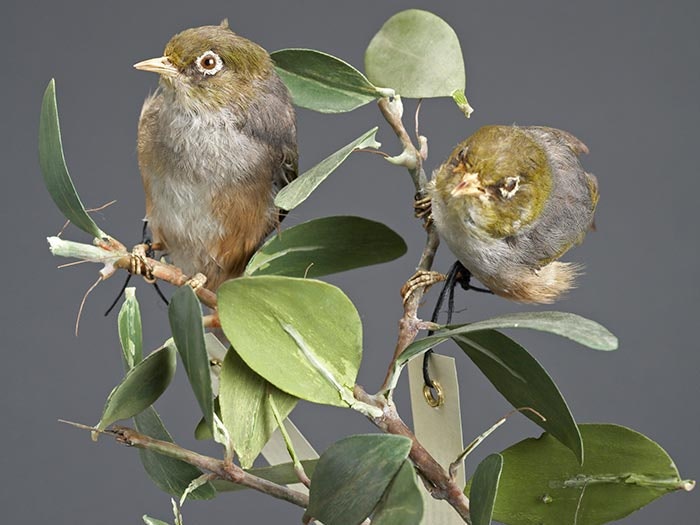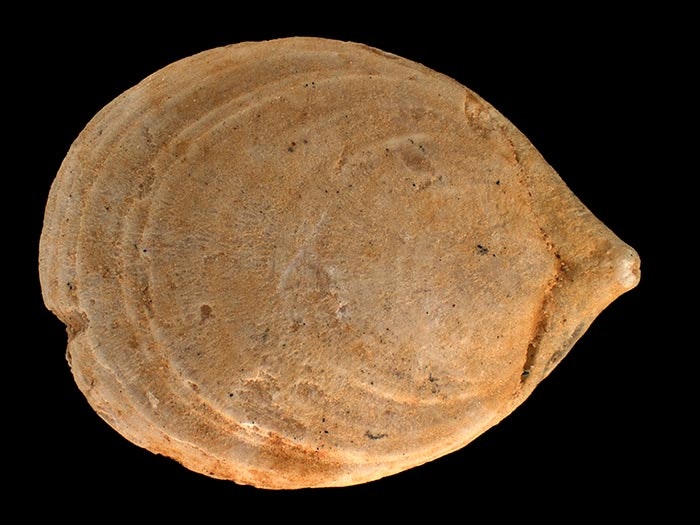
Tuhinga 16, 2005
Jump to:
Kiri’s Dresses: an exhibition about an iconic New Zealander
Ectoparasites from native and introduced birds from Christchurch and surrounding areas, New Zealand
The lichen genus Physcia (Schreb.) Michx (Physciaceae: Ascomycota) in New Zealand
James Butterworth and the Old Curiosity Shop, New Plymouth, Taranaki
Te Papa and New Zealand Indian communities - the other side of the coin
Kiri’s Dresses: an exhibition about an iconic New Zealander
Stephanie Gibson
ABSTRACT: The Museum of New Zealand Te Papa Tongarewa (Te Papa) holds the significant Kiri Te Kanawa Collection from which a small dress exhibition called Kiri’s Dresses - A glimpse into a Diva’s wardrobe was created in 2003. The exhibition storylines and interpretation were determined by the dresses and the first person memories of Dame Kiri and her designers. These curatorial and interpretive approaches are explored as a case study on an object/memory approach to developing an exhibition about an iconic person. Dame Kiri’s approach to dress is illuminated throughout the paper.
Kiri’s Dresses: an exhibition about an iconic New Zealander (1.65 MB)
Ectoparasites from native and introduced birds from Christchurch and surrounding areas, New Zealand
Terry D. Galloway
ABSTRACT: Birds found dead as a result of window-strikes on the University of Canterbury campus (Christchurch, New Zealand), and other dead birds submitted to the Zoology Department were examined for ectoparasites. A total of 244 birds of 22 species were examined during 1998-2000. Silvereyes were found in greatest numbers (n=133) and were infested with the feather louse, Menacanthus eurysternus (Burmeister, 1838) (Phthiraptera: Menoponidae), which reached greatest prevalence and intensity of infestation in the summer and early autumn months; in general, infestation with lice was not related to host sex. One silvereye was infested with a flea, Ceratophyllus gallinae (Schrank, 1803) (Siphonaptera: Ceratophyllidae), a new host-parasite record for New Zealand. The remaining 21 species of birds were infested with, collectively, at least 20 species of lice (including M. eurysternus). Infestation parameters for lice are provided for all host species examined. One male and one female of Ornithoica sp. (Diptera: Hippoboscidae) were found on blackbirds; one blackbird was infested with a male C. gallinae. Two of three Hutton's shearwaters examined were infested with the tick, Ixodes uriae White, 1852 (Acari: Ixodidae), a new host-parasite record for New Zealand.
Ectoparasites from native and introduced birds from Christchurch and surrounding areas, New Zealand (152.04 KB)
‘The democratic politician does not trouble himself with science’: Class and professionalisation in the New Zealand Institute, 1867 – 1903
Francis Lucian Reid
ABSTRACT: Drawing upon a wide range of printed primary sources and manuscripts held in the Archive of the Museum of New Zealand Te Papa Tongarewa, this paper argues that the New Zealand Institute during the period 1867-1903 should be understood as a class based and a class defining institution, and that efforts during the early 1880s to reform the Institute were in part an attempt to replace a social elite with a professionalised one. Furthermore, this paper argues that this class based system helped to support scientific institutions by solidifying links between New Zealand’s tiny band of professional men of science and the colonial political elite.
Rediscovery of the types of Dinornis curtus Owen and Palapteryx geranoides Owen, with a new synonymy (Aves: Dinornithiformes) (727.87 KB)
Rediscovery of the types of Dinornis curtus Owen and Palapteryx geranoides Owen, with a new synonymy (Aves: Dinornithiformes)
Trevor H. Worthy
ABSTRACT: A left tibiotarsus BMNH A5906, carrying the original Royal College of Surgeons number 2305 (later replaced by 2290 and then by 2292), located in the Natural History Museum, London, is identified as the lectotype (nominated by Lydekker in his 1891 catalogue) of Dinornis curtus Owen, 1846. BMNH 21687, the lectotypical cranium of Palapteryx geranoides Owen, 1848, was found to be conspecific with Pachyornis mappini Archey, 1941, which therefore becomes a junior synonym of Palapteryx geranoides, now known as Pachyornis geranoides, for which a new synonymy is given. The majority of moa bones from Waingongoro, Taranaki, New Zealand, whence the lectotypical cranium of Pachyornis geranoides originated, belong to this same species, as originally stated by Owen. Photographs of both lectotypes are presented. A lectotype for Pachyornis septentrionalis Oliver, 1949 is nominated, as the ‘type’ is a skeleton that comprises two taxa.
Rediscovery of the types of Dinornis curtus Owen and Palapteryx geranoides Owen, with a new synonymy (Aves: Dinornithiformes) (727.87 KB)
Recent and fossil invertebrate primary types in the Museum of New Zealand Te Papa Tongarewa: Protozoa, Acanthocephala, Annelida, Brachiopoda, Myxozoa, Nematoda, Nematomorpha, Platyhelminthes, Porifera and Sipuncula
Bruce A. Marshall
ABSTRACT: The Museum of New Zealand Te Papa Tongarewa’s holdings of primary types in the following invertebrate groups are listed: Protozoa, Acanthocephala, Annelida, Brachiopoda, Myxozoa, Nematoda, Nematomorpha, Platyhelminthes, Porifera and Sipuncula. A list of primary types missing from the museum collections and a complete list of primary references are also provided.
Recent and fossil invertebrate primary types in the Museum of New Zealand Te Papa Tongarewa: Protozoa, Acanthocephala, Annelida, Brachiopoda, Myxozoa, Nematoda, Nematomorpha, Platyhelminthes, Porifera and Sipuncula (152.14 KB)
The lichen genus Physcia (Schreb.) Michx (Physciaceae: Ascomycota) in New Zealand
D.J. Galloway and R. Moberg
ABSTRACT: Fourteen species of the lichen genus Physcia (Schreb.) Michx are recognized in the New Zealand mycobiota, viz: P. adscendens, P. albata, P. atrostriata, P. caesia, P. crispa, P. dubia, P. erumpens, P. integrata, P. jackii, P. nubila, P. poncinsii, P. tribacia, P. tribacoides and P. undulata. Descriptions of each taxon are given, together with a key and details of biogeography, chemistry, distribution and ecology. Physcia tenuisecta Zahlbr., is synonymized with Hyperphyscia adglutinata, and Physcia stellaris auct., is deleted from the New Zealand mycobiota. Physcia atrostriata, P. dubia, P. integrata, and P. nubila are recorded from New Zealand for the first time. A list of excluded taxa is appended.
The lichen genus Physcia (Schreb.) Michx (Physciaceae: Ascomycota) in New Zealand (575.77 KB)
James Butterworth and the Old Curiosity Shop, New Plymouth, Taranaki
Kelvin Day
ABSTRACT: James Butterworth established a successful Maori curio dealing business in New Plymouth during the latter part of the nineteenth century. The coastal Taranaki settlement of Parihaka was a favoured place to obtain artefacts for his shop. Butterworth produced three sales catalogues and many of the artefacts he sold carried important information regarding provenances and associations. Some of Butterworth’s artefacts found their way into the Canterbury Museum in 1896. Other items helped form the foundation of the taonga Maori collection of the Colonial Museum, Wellington. Locating where other items, which passed through Butterworth’s shop, are now held has proved very difficult. This study highlights the need for further analysis of curio dealers who operated within New Zealand and the artefacts in which they dealt.
Community consultation:
James Butterworth and the Old Curiosity Shop, New Plymouth, Taranaki (1.99 MB)
Te Papa and New Zealand Indian communities – the other side of the coin
Dr Pushpa Wood
ABSTRACT: This response to a recent article by Stephanie Gibson in Tuhinga (2003) aims to describe a process of community consultation that is accepted by most communities and institutions and can be implemented in any surrounding and for any project. It may pose some challenges for bureaucracy, but it is necessary if corporate, governmental and quasi-governmental organisations wish a continued and positive relationship with the communities in which they work.
Te Papa and New Zealand Indian communities - the other side of the coin (116.07 KB)
Comparative scale morphology and squamation patterns in triplefins (Pisces: Teleostei: Perciformes: Tripterygiidae)
Laith A. Jawad
ABSTRACT: Scale surface morphology and squamation patterns provide new and useful information for tripterygiid systematics. A comparative study comprising 48 tripterygiid species was conducted to identify the most useful scale and squamation characters within the family and to clarify their systematic significance. Several characters were established. Three types of bending of the first interradial circulus were found: straight, bulging rostrad, bulging caudad. The genera Forsterygion, Grahamina and Obliquichthys have a straight interradial circulus, which separates them from the remaining triplefin genera. Also, body scales with a pentagonal shape were found uniquely in those three genera. Several features of the lateral line scales proved to be of particular value for taxonomic purposes. The squamation on the head, belly, caudal peduncle and the fins was also found to be of interest in this context. From the results, it is concluded that scale and squamation studies can be valuable tools in investigating systematic relationships among the Tripterygiidae.
Comparative scale morphology and squamation patterns in triplefins (Pisces: Teleostei: Perciformes: Tripterygiidae) (1.09 MB)

